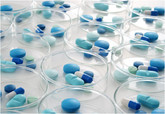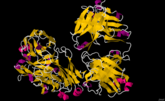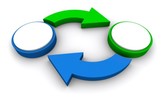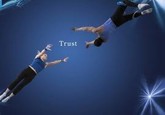Biosimilars/Research
Biosimilars in the treatment of chemotherapy-induced anaemia
A study of the use of epoetin biosimilars in the therapeutic management of anaemia secondary to chemotherapy in haematology and oncology has shown the biosimilars to be effective and well tolerated in the management of chemotherapy-induced anaemia in patients with solid tumours, lymphoma and myeloma [1].
Biosimilar trastuzumab similar to Herceptin in non-clinical study
Comparative non-clinical assessments of the proposed trastuzumab biosimilar PF-05280014 and the originator product (Herceptin) sourced in the US and in Europe showed similar structural properties, tumour cell growth inhibition properties and pharmacokinetic profiles, as well as safety profiles [1].
Phase I studies of infliximab and rituximab biosimilars demonstrate pharmacokinetic similarity
Results of phase I trials of pharma giant Pfizer’s biosimilar infliximab and rituximab candidates have demonstrated similar pharmacokinetic properties compared to the originator products [1, 2].
Biosimilar infliximab comparable to Remicade
Results from a phase III trial have demonstrated the comparability of US-based Epirus Biopharmaceuticals (Epirus) biosimilar (BOW015) to Remicade for the treatment of rheumatoid arthritis.
Can the pursuit of biosimilar interchangeability go too far?
The question of biosimilar interchangeability – whether or not a biosimilar can safely be switched with another biosimilar or with the originator product – is a thorny one. In fact, write Hans C Ebbers and Paul Chamberlain [1], striving for some of the standards suggested to certify interchangeability may not be in a patient’s best interests.
Synthon’s SYD985 outperforms Kadcyla in vitro and in vivo
Synthon announced on 2 April 2014 that its antibody-drug conjugate SYD985 had outperformed Roche’s breast cancer blockbuster Kadcyla (trastuzumab emtansine) in a head-to-head comparison.
Biosimilar epoetin shows good safety profile in post-authorization study
US-based generics manufacturer Hospira announced on 28 April 2014 positive results from a post-authorization observational safety study of its biosimilar epoetin product Retacrit/Silapo (epoetin zeta) in patients with renal anaemia [1].
Biosimilars for inflammatory bowel disease in Norway
Europe approved its first biosimilar monoclonal antibody Inflectra/Remsima (infliximab) on 10 September 2013 [1]. The biosimilar is now recommended by the Norwegian Drug Procurement Cooperation (LIS) as the first choice, which carries out the procurement for all medicines financed by public hospitals in Norway. Gastroenterologists, however, are cautious about using the biosimilar ‘until more studies of the new medicine have been completed’ [2].
Biosimilar G-CSF safe for mobilization of stem cells
A study into the use of granulocyte colony-stimulating factor (G-CSF) biosimilars for peripheral blood haematopoietic stem cell (PBSC) mobilization has found them to be equivalent to the reference G-CSF [1].
Challenges for the regulation of biosimilars
The European Medicines Agency (EMA) was the first agency to issue guidelines for the approval of biosimilars via an abbreviated registration process back in 2006. Since then the agency has developed many general and specific guidelines for biosimilars, as well as approved 18 biosimilars to date [1]. Tsiftsoglou and co-authors, however, believe that many challenges still lie ahead for this class of biologicals, some of which are discussed here [2].












